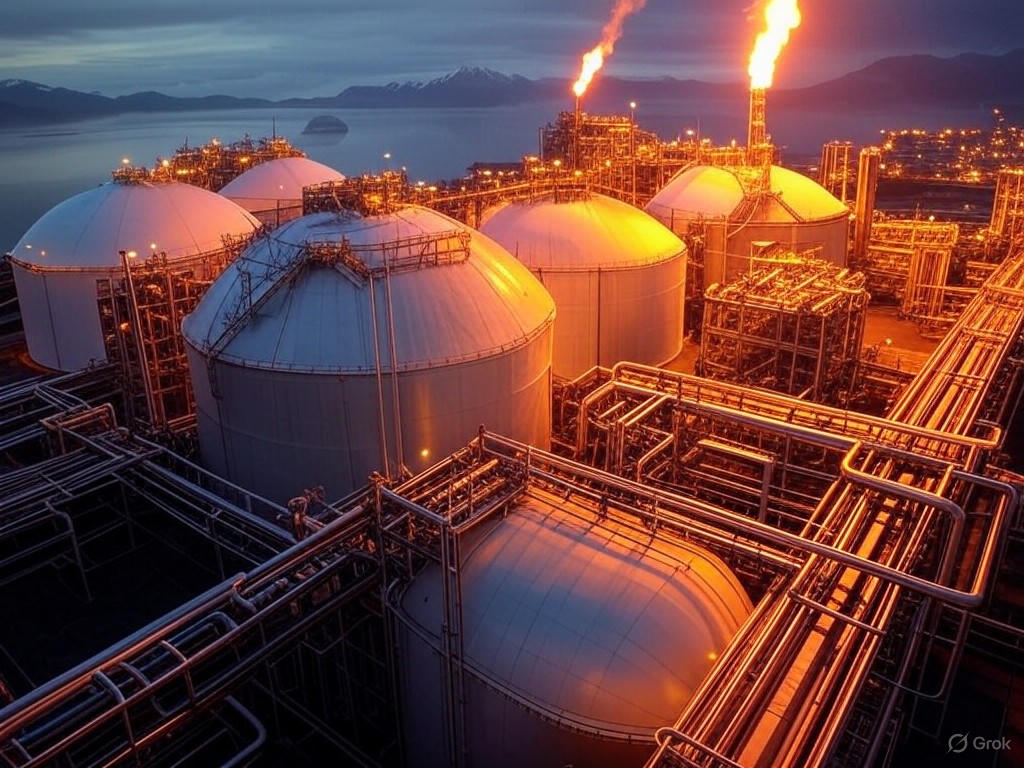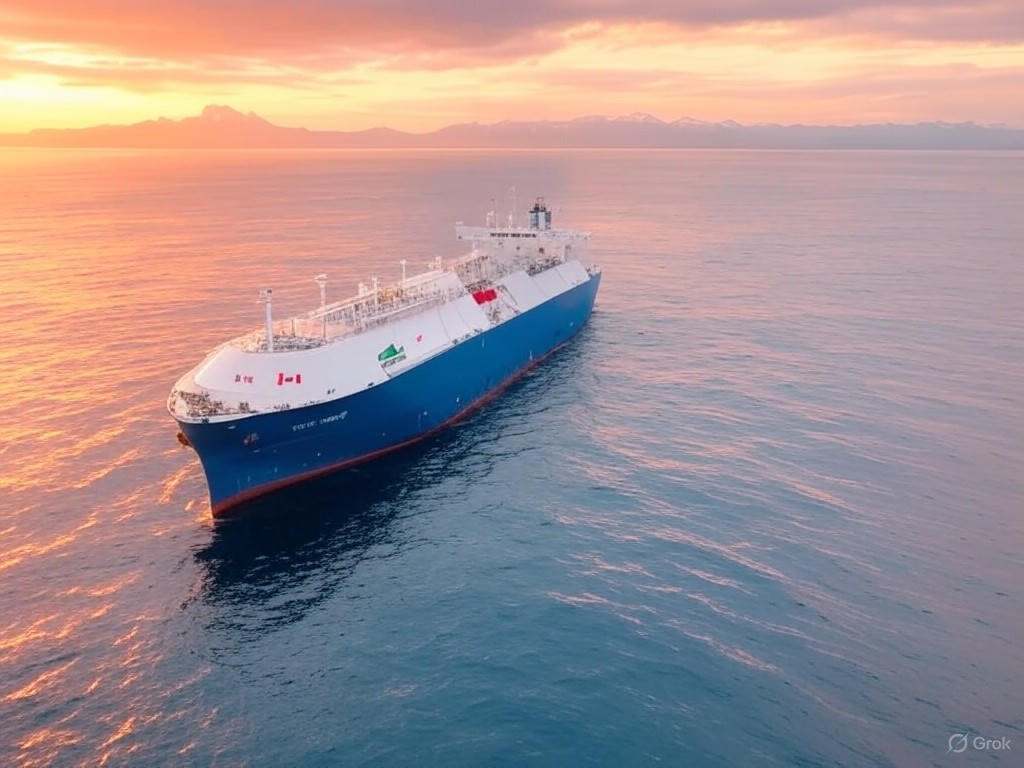BC’s LNG Ambitions: A Global Energy Play
In the vast expanse of North America’s energy landscape, British Columbia stands as a beacon of potential, harnessing its natural resources to assert influence on the world stage. As global demand for reliable energy sources surges, liquefied natural gas (LNG) from BC emerges not just as a commodity, but as a strategic asset in fostering international trade and economic stability. Yet, this ascent is not without hurdles—environmental concerns and trade complexities threaten to impede progress. Drawing from a tradition of practical ingenuity, akin to the self-reliant ethos of early American thinkers, we must advocate for free-market principles that prioritize innovation over excessive regulation. This editorial explores how BC’s LNG projects position the province as a global energy player, emphasizing balanced approaches that honor environmental stewardship while championing economic pragmatism.
The Rise of BC as a Global Energy Hub
British Columbia’s foray into LNG production represents a calculated pivot toward energy independence and export leadership. With vast natural gas reserves in the Montney and Horn River basins, the province has invested in infrastructure like the LNG Canada facility, a joint venture that underscores the power of private-sector collaboration. This project, set to become one of the world’s largest LNG exporters upon full operation, exemplifies how free-market dynamics can transform regional resources into global commodities. By 2030, BC could supply up to 10% of Asia’s LNG needs, bolstering energy security for nations like Japan and South Korea amid geopolitical tensions Wall Street Journal, "The LNG Boom Reshaping Global Trade".
The narrative of BC’s LNG ascent is one of opportunity rooted in traditional values of resourcefulness and enterprise. Historically, regions like this have thrived by leveraging natural endowments without undue government interference, allowing market forces to dictate growth. However, environmental opposition, often centered on the potential impacts of pipeline construction and emissions, has cast a shadow over these ambitions. Critics point to the carbon footprint of LNG production, yet a closer examination reveals that natural gas serves as a transitional fuel, bridging the gap to lower-emission technologies. This pragmatic view aligns with center-right principles: promoting energy diversity through private initiative rather than imposing top-down mandates that could stifle investment.

This image captures the LNG Canada export terminal under the evening sky, symbolizing BC's emergence as a key player in global energy trade, where innovation meets the rugged landscape of the Pacific Northwest.
Navigating Trade Challenges and Environmental Opposition
Analysis of BC’s LNG sector reveals a delicate balance between global trade imperatives and domestic constraints. On the trade front, BC benefits from its proximity to Asia-Pacific markets, facilitated by the expanding Panama Canal and favorable shipping routes. This positioning allows BC to compete with rivals like Qatar and Australia, where LNG has already driven economic booms. According to industry experts, BC’s exports could generate billions in revenue, creating jobs in construction, engineering, and logistics—sectors that embody the free-market ideal of upward mobility through hard work and innovation Natural Gas Intelligence Blog, "BC's LNG Exports: A New Era in Global Energy".
Yet, trade challenges persist. Tariffs and regulatory barriers, such as those imposed during U.S.-China trade disputes, have introduced volatility. For instance, Canada’s reliance on the U.S. for pipeline infrastructure highlights the risks of interconnected economies, where protectionist policies could disrupt supply chains. A center-right perspective urges limited government intervention here; instead of erecting new barriers, policymakers should foster agreements that enhance cross-border commerce, ensuring that market-driven solutions prevail. This approach not only safeguards economic interests but also upholds traditional values of reciprocity and fair play in international relations.
Environmental opposition, particularly from Indigenous groups and local activists, adds another layer of complexity. Concerns over habitat disruption and greenhouse gas emissions from projects like the Coastal GasLink pipeline have led to protests and legal battles. While these voices deserve consideration, an overemphasis on regulation risks paralyzing development. Evidence suggests that modern LNG facilities incorporate advanced technologies, such as carbon capture and storage, which mitigate environmental impacts without compromising efficiency International Energy Agency Report, "The Role of LNG in a Low-Carbon Future". By embracing such innovations through private investment, BC can address these concerns pragmatically, avoiding the pitfalls of government overreach that often lead to inefficiency and higher costs for consumers.

This detailed map illustrates the strategic pipeline networks and export pathways from British Columbia to Asia-Pacific markets, highlighting the province's pivotal role in global energy logistics amid ongoing environmental dialogues.
Evidence of Economic and Environmental Realities
Empirical evidence underscores the dual potential of BC’s LNG projects to drive prosperity while managing ecological risks. Data from recent reports indicate that the sector could contribute over $40 billion to Canada’s GDP by 2040, primarily through exports that stabilize energy prices in volatile markets Oxford Institute for Energy Studies, "British Columbia's LNG: Balancing Growth and Sustainability". This growth is not abstract; it translates to thousands of high-skill jobs, revitalizing rural communities and reinforcing the social fabric through stable employment opportunities.
Comparatively, regions like Louisiana in the United States have demonstrated how LNG can coexist with environmental safeguards. There, free-market incentives have spurred investments in cleaner technologies, reducing methane emissions by 20% over the past decade. BC could follow suit, leveraging its regulatory framework to encourage voluntary industry standards rather than mandatory overhauls. Such an approach aligns with limited government principles, where businesses are empowered to innovate rather than comply with burdensome mandates. For example, the LNG Canada project has committed to net-zero operations by 2050, a goal achieved through market-based partnerships rather than coercive policies Wall Street Journal, "How LNG Projects Are Adapting to Environmental Pressures".
Despite these advancements, challenges remain. Trade uncertainties, exacerbated by global events like the Russia-Ukraine conflict, have heightened demand for alternative suppliers like BC. This underscores the need for a steady, market-oriented strategy that prioritizes energy reliability over ideological shifts. By focusing on practical solutions—such as streamlined permitting processes and international trade pacts—BC can mitigate opposition and solidify its global role.
A Path Forward: Embracing Practical Solutions
In conclusion, British Columbia’s LNG projects offer a compelling narrative of resilience and opportunity, positioning the province as a vital cog in the global energy machinery. Through free-market mechanisms that encourage private investment and innovation, BC can overcome environmental and trade obstacles, ensuring a stable energy future for the world. This requires a commitment to limited government intervention, allowing traditional values of self-reliance and stewardship to guide policy. As we look ahead, policymakers must resist the temptation of excessive regulation, instead fostering an environment where economic growth and environmental responsibility coexist harmoniously.
The story of BC’s LNG is not one of unbridled expansion but of thoughtful deliberation, much like the enduring wisdom of figures who championed practical living. By embracing this ethos, we can secure not only economic gains but also a legacy of balanced progress for generations to come.

This photo depicts an LNG tanker navigating the Pacific Ocean, embodying the seamless integration of British Columbia's energy exports into global trade networks while underscoring the need for sustainable maritime practices.

